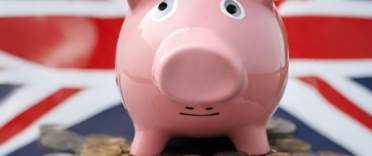 What is Tax-Free Childcare?
What is Tax-Free Childcare?
Tax-Free Childcare is a government scheme that helps support parents and carers with the cost of childcare. For every £8 you pay towards qualifying childcare, the government pays an additional £2, up to a maximum of £2,000 per child per year (capped at £500 per quarter), or £4,000 if your child is disabled. This means you can use it to help fund £10,000 of childcare annually.
What can you use Tax-Free Childcare for?
The Tax-Free Childcare scheme can be used to pay for childcare with a range of registered providers. This includes:
- Childminders, nannies, au pairs and nurseries
- Before and after-school clubs
- Playgroups
- Sport and art clubs
- Holiday clubs
Crucially, the childcare provider has to be registered with the scheme - currently, there are around 63,000 registered providers - as well as with an appropriate regulator, such as Ofsted, the Early Years Register or Childcare Register. This means Tax-Free Childcare can't be used to fund more informal options, such as babysitting with an unregistered provider, such as a friend or family member.
Who is eligible for Tax-Free Childcare?
Tax-Free Childcare is available for children up to the age of 11, with the funding stopping on 1 September after the child's 11th birthday. For children with disabilities, the scheme runs until the child is 17. However, eligibility for Tax-Free Childcare is determined by the status of the parents or carers, with the need for both parents or carers - or one in the case of single parents or carers - to meet certain criteria. These include:
Being in work
You have to be working the equivalent of 16 hours per week to qualify for the support, with this including full-time and part-time work. If you have a partner, both of you need to be in work, with the exception being if one person works but the other isn't able to work and receives certain benefits, such as incapacity benefit or carer's allowance.
Self-employed people are eligible as long as they meet the national minimum wage for their age group over the next 3 months or across the current tax year. For those who have been registered as self-employed for less than a year, the minimum income requirement isn't applicable.
It's important to note that a partner doesn't have to be a parent to the child, only live in the same household. This means that for a single parent, you could risk losing Tax-Free Childcare if your partner moves in but isn't working, or doesn't meet one of the other criteria.
There are certain situations where you may not be working, but will still qualify for Tax-Free Childcare, including:
- If you are on sick leave
- If you are on annual leave
- If you are on shared parental, maternity, paternity or adoption leave
- If you aren't currently working but are due to start a new job within the next month
Earning above and below certain thresholds
Applicants need to earn the national minimum wage for their age group to qualify for the scheme. This means that over the next 3 months you (and your partner if you have one) must each expect to earn at least:
- £2,379 if you’re aged 21 or over
- £1,788 if you’re aged 18 to 20
- £1,331 if you’re under 18 or an apprentice
This is the National Minimum Wage or Living Wage for 16 hours a week on average
At the upper limit, you have to earn less than £100,000 per year, although this applies to each partner, which means you could both earn £99,999 per year and still be able to get Tax-Free Childcare. However, you aren't eligible if one person earns £20,000 but the other earns £110,000 per year.
Not receiving certain benefits
You will not be eligible for Tax-Free Childcare if you receive Universal Credit, tax credits or childcare vouchers. You can, however, claim it alongside getting 15 or 30 hours free childcare if you have a child aged 9 months to 4 years old.
How does Tax-Free Childcare work?
For every 80p you pay into your childcare account, the government pays in 20p, which, in effect, makes it tax free if you are a basic-rate taxpayer. With a limit of £2,000 per year, this means you can get £10,000 of childcare for just £8,000. If your child is disabled, you can get £4,000 per year, which means you can get £12,000 worth of childcare for £8,000.
Please note that there is a quarterly limit on the amount the government will contribute, with it only paying up to £500 every 3 months. If you know you're likely to need to spend more on childcare at specific times of the year - for example, during the summer holidays - you can pay in money, up to the maximum, each quarter and then save the money to use at that time.
In order to work out how much you need to pay into your tax-free childcare account, take the total amount you need to pay for your childcare bill and multiply it by 0.8. This will show you how much you need to contribute, with the government making up the rest of the payment.
How to apply for Tax-Free Childcare
If you think you are eligible to claim Tax-Free Childcare, you need to create an account on the government website. You will need your National Insurance number and your Unique Taxpayer Reference if you are self-employed. The application takes approximately 20 minutes and you will either find out if you qualify for the scheme immediately or within 7 days.
You will need to include the details of both parents or carers, except in the case of single-parent households. However, the account will only be in one parent or carer's name, although both can pay into it. It is also possible for other people, such as grandparents, other family members or friends to pay into the account.
You can make payment by standing order or with your debit card, although it isn't possible to set up a direct debit. Once you have paid in money to the account, the government top-up should appear the same day, although this process is slightly quicker if you pay with your debit card rather than setting up a standing order. Once the funds are in your account, you can pay your childcare provider, with the money reaching them on the same day if you make the payment before 2.30pm, or on the next working day if you pay after 2.30pm.
You need to confirm you are still eligible for Tax-Free Childcare every 3 months, which you do via your account. You will be sent reminders ahead of the 3-month deadline.





